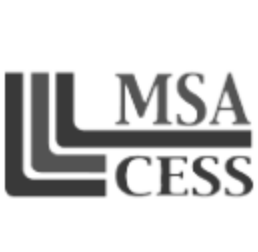Online High School vs. Traditional High School – What’s the Difference?
At its simplest, Online High School refers to a complete, accredited high school curriculum that can be completed 100% online. Traditional High School is most often a physical bricks-and-mortar location where multiple students attend classes in person to receive credit for high school coursework. Both options allow students to earn the same level of high school diploma – the key difference is the way in which students learn and accumulate credits.
The Online High School Experience – Quick Reference Guide
- All classes can be accessed 100% online – without the need to attend an assigned physical location.
- Courses are designed to fulfill essential requirements for earning a high school diploma.
- Students are permitted to study at their own pace – advanced students may move ahead more quickly, other students can take their time.
- There is no set time of day students are required to be present for “attendance.” As long as students are completing coursework and assignments as directed, they are eligible to earn credit and study at the time of day they so choose, including nights and weekends.
- There is a wide selection of elective courses.
- Some courses may be tailored to fit students’ individual interests through independent/self-directed reading and other options.
- Students may take vacations with family, travel, or even relocate without having to give up their studies. The online classroom is available to them from anywhere with an internet connection.
- Teachers are available to students via email, text, class chat, or phone to help answer questions.
- Options for transportation are not necessary – students may access their classes from home, the library, or anywhere with an internet connection.
- Extra-curricular activities such as student government, sports, or cheer leading are unavailable.
- Some online high schools require tuition.
The Traditional High School Experience – Quick Reference Guide
- Most traditional high schools are free as part of state/local public school systems. Some traditional high schools may also be private schools and require tuition.
- Students are expected to report to a physical location every day, Monday through Friday, usually from 7:30 am to 2:30 pm.
- Curriculum is designed for completion of any single core course over an entire 9- to 10-month school year.
- AP (Advanced Placement) and higher-level courses are available in addition to basic requirements.
- Every student in a given class follows the same textbook with little or no chance to customize their learning experience.
- All students are expected to “keep up with the class” which means advanced students may not move ahead and struggling students may get left behind.
- Options for elective courses are limited, and many students may not have available “room” in their schedules for desired electives.
- Students who fall behind typically have few options for graduating on time with their peers.
- Students may participate in extra-curricular activities as long as they are meeting academic minimums.
- Teachers decide when, where, and how they will address student questions and additional needs.
- Families who travel or relocate often for work must un-enroll and re-enroll at physical schools who may or may not be at the same instructional level as the student.
- Transportation to and from school must be considered – either through public/private buses, drop off and pick up, carpooling, or other means.
Which Educational Option is Right for Me?
What works best for one student may not work as well for another student. That’s because all students – and all people are different. You may enjoy the freedom and flexibility that comes with studying at your own pace, from the comfort of home, with the option to customize what and how you learn. Or, you might find that you prefer the daily routine of arriving at a physical bricks-and-mortar location because you like spending face-to-face time with your classmates. Both are equally fine options for earning your high school diploma. What online high school seeks to do differently than traditional high school is to give you more choice in the matter.
With Citizens High School you can choose from:
- Career or Job Track – a fully accredited diploma that meets the requirements of employers and trade schools alike.
- College Track – a fully accredited diploma with a little additional coursework typically expected for admission to most 4-year colleges and universities.











